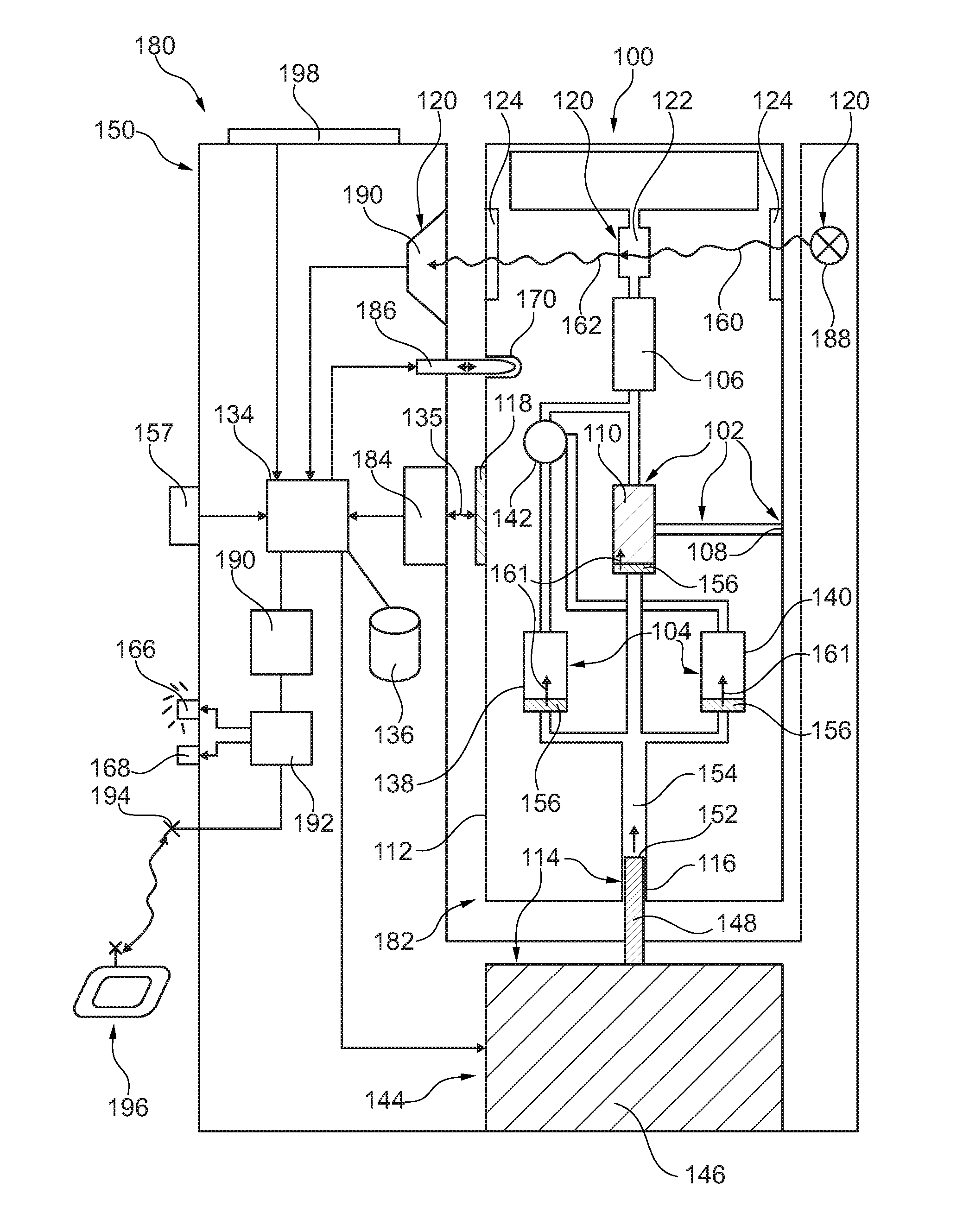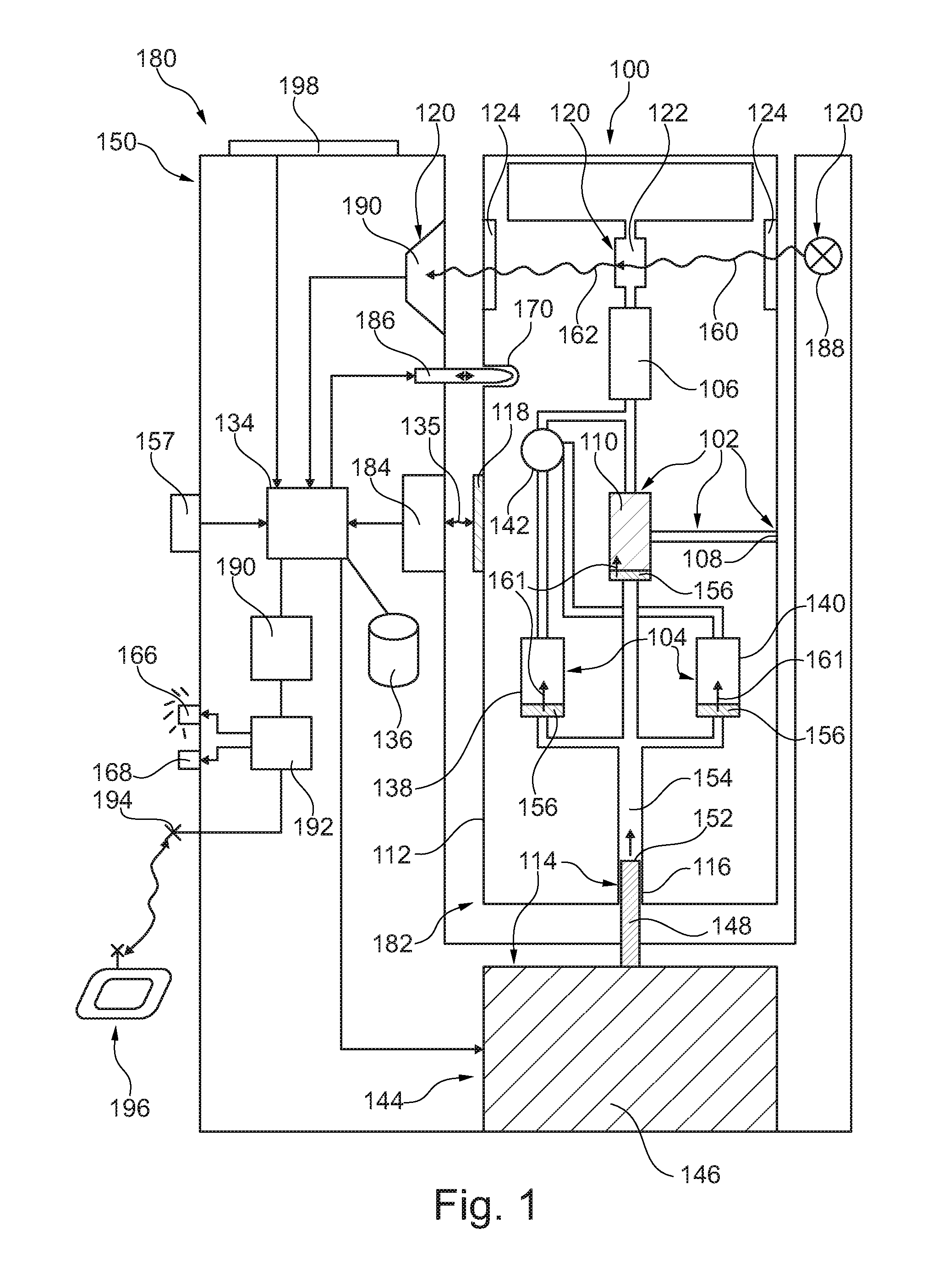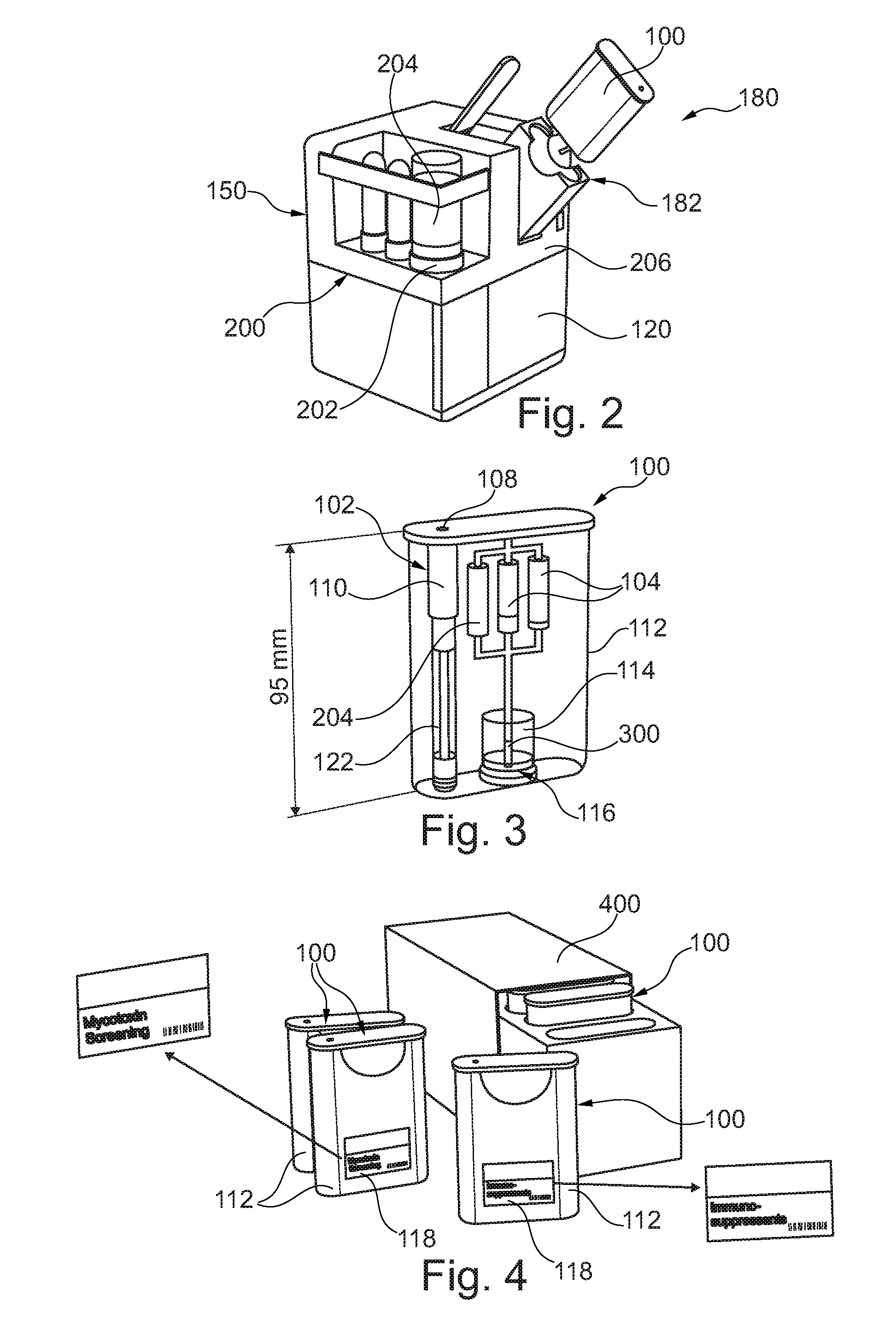Liquid chromatography analysis unit
- Summary
- Abstract
- Description
- Claims
- Application Information
AI Technical Summary
Benefits of technology
Problems solved by technology
Method used
Image
Examples
Example
[0033]The illustrations in the drawings are schematic.
[0034]Before, referring to the drawings, exemplary embodiments will be described in further detail, some basic considerations will be summarized based on which exemplary embodiments of the invention have been developed.
[0035]According to an exemplary embodiment, a compact HPLC (high performance liquid chromatography) analyzer cartridge is provided which can be used even by an unskilled user in a simple and flexible way.
[0036]Current standard liquid chromatography systems are huge and complicated instruments which require high education and training from the user. Many different applications are possible, but this is not always required. Errors caused by the user are easily possible.
[0037]In contrast to such complex conventional approaches, a compact liquid chromatography analyzer cartridge system according to an exemplary embodiment may be dedicated for different applications and is easy and safe to use especially from an untrain...
PUM
 Login to View More
Login to View More Abstract
Description
Claims
Application Information
 Login to View More
Login to View More - R&D
- Intellectual Property
- Life Sciences
- Materials
- Tech Scout
- Unparalleled Data Quality
- Higher Quality Content
- 60% Fewer Hallucinations
Browse by: Latest US Patents, China's latest patents, Technical Efficacy Thesaurus, Application Domain, Technology Topic, Popular Technical Reports.
© 2025 PatSnap. All rights reserved.Legal|Privacy policy|Modern Slavery Act Transparency Statement|Sitemap|About US| Contact US: help@patsnap.com



